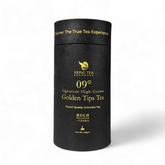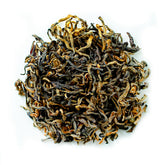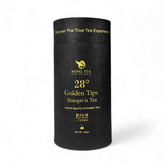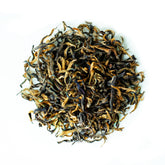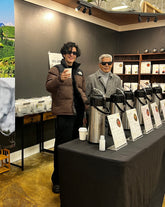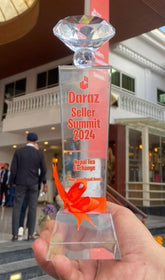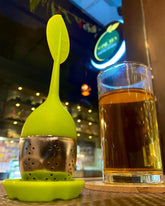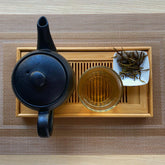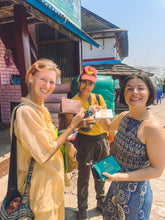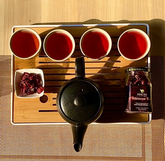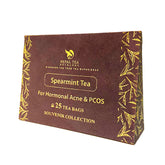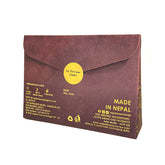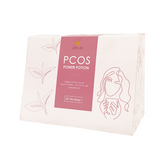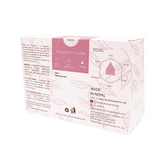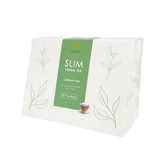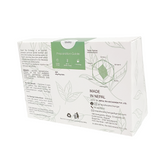Why Ilam Tea Is Nepal’s Premium Tea: Flavor, Production & Global Rise
The Rise of Nepal’s Finest Tea
High in the misty hills of eastern Nepal, Ilam has become the heart of the country’s premium tea revolution. Once overshadowed by Darjeeling, Ilam now produces some of the world’s most aromatic and award-winning orthodox teas. Its unique terroir, sustainable farming, and growing export footprint are making “Ilam Tea” a global name — one that every tea lover should know.
What Makes Ilam Tea Unique
Ilam’s rolling green hills lie between 1,200 to 2,000 meters above sea level, a perfect altitude for slow-grown tea leaves that develop deep, complex flavors.
The cool climate, fertile Himalayan soil, and misty air help create the distinctive floral and fruity notes that have become Ilam’s signature.
Unlike the mass-produced CTC (crush-tear-curl) teas found elsewhere, Ilam focuses on orthodox tea — hand-plucked and carefully rolled to preserve the full leaf and its natural oils. This meticulous process produces a clean cup with elegant aroma and taste.
Flavor Profile: The Soul of Ilam Tea
Each cup of Ilam tea tells the story of its soil and altitude. Here’s what sets it apart:
- Black Tea: Bright amber color, medium body, notes of honey, stone fruit, and muscatel (similar to Darjeeling but softer and sweeter).
- Green Tea: Fresh, vegetal flavor with a mild nuttiness and light floral finish.
- White Tea: Delicate, creamy texture with subtle sweetness and high antioxidant content.
-
Oolong (rare): Smooth with hints of caramel and orchid — a rising trend among connoisseurs.
Tip for connoisseurs: Let your Ilam black tea steep for 3–4 minutes at 90–95°C to release its layered aroma.
Orthodox vs. CTC: Understanding Nepal’s Two Tea Worlds
Nepal produces roughly 26,000 tonnes of tea each year — about 6,500 tonnes are orthodox teas, the rest being CTC teas grown mainly in the Terai region.
- Orthodox Tea (like Ilam’s): Handcrafted, aromatic, and premium — exported globally.
-
CTC Tea: Machine-processed, strong-bodied, and commonly used for milk tea blends.
For tea buyers and importers, orthodox teas from Ilam and Panchthar are the true gems of Nepal — valued for their artisanal quality and growing international acclaim.
Awards & Global Recognition
Ilam’s reputation now extends well beyond Nepal’s borders. In 2024, the Siddha Devi Tea Estate from Ilam won “World’s Best Tea” at the World Tea Expo, beating competitors from India, Japan, and China.
This recognition marked a turning point — positioning Nepal as a serious contender in the global premium tea market.
Many small cooperatives and organic farms from Ilam now export to Europe, the U.S., and Japan under “Nepal Tea” labels, often compared favorably with top Darjeeling and Nilgiri teas.
Ilam Tea vs. Darjeeling: A Himalayan Rivalry
For years, Darjeeling has been hailed as the “Champagne of Teas.” Yet, Ilam’s flavor profile shares the same Himalayan altitude and even the same Camellia sinensis varietals.
Key differences:
|
Feature |
Ilam Tea (Nepal) |
Darjeeling Tea (India) |
|
Altitude |
1,200–2,000 m |
1,000–2,000 m |
|
Flavor |
Floral, sweet, muscatel |
Sharp, brisk, muscatel |
|
Production style |
Small-batch, hand-rolled |
Estate-based, mechanical |
|
Price |
More affordable |
Premium pricing |
|
Market Trend |
Rising popularity |
Established legacy |
Tea experts now call Ilam “Darjeeling’s natural twin,” offering world-class quality at more accessible prices.
Nepal Tea Exports: Growing Demand & Global Reach
According to Nepal’s National Tea and Coffee Development Board, tea exports have steadily grown in both volume and value in recent years.
Key export markets include India, Germany, Japan, the U.S., and China, with growing interest from specialty tea importers in Europe.
Government and private partnerships — such as fair-trade certification, organic farming initiatives, and branding under “Nepal Orthodox Tea” — are driving Ilam’s export success story.
How to Buy Authentic Ilam Tea
As Ilam’s fame grows, so does imitation. Here’s how to ensure you’re buying genuine Nepali tea:
- Check the origin label: Authentic Ilam tea should mention “Ilam, Nepal” or a specific estate name.
- Look for whole leaf: Avoid broken or dusty leaves if you want premium quality.
- Buy from trusted sellers: Purchase directly from certified Nepalese producers or marketplaces like Nepal Tea Exchange, which partners with verified estates.
- Seek certifications: Organic, Fairtrade, or “Nepal Orthodox Tea” seals ensure authenticity.
Brewing & Enjoying Ilam Tea: A Short Guide
- Water: Use filtered, non-chlorinated water.
- Temperature: 90–95°C for black; 80°C for green and white.
- Steeping Time: 3–4 minutes for black; 2–3 minutes for green and white.
-
Serving Tip: Enjoy plain — no milk needed to appreciate its natural sweetness.
Pro tip: Re-steep the leaves up to two times; Ilam tea’s flavors unfold beautifully with each infusion.
Why You Should Try Ilam Tea Today
If you appreciate pure, hand-crafted teas grown with Himalayan care, Ilam tea is a revelation.
It combines Nepal’s highland purity with generations of craftsmanship — offering a sustainable, ethical, and world-class beverage that’s winning hearts (and awards) worldwide.
Shop Authentic Ilam Tea from Nepal Tea Exchange
At Nepal Tea Exchange, we connect you directly with certified producers and estates in Ilam.
Explore our Orthodox Collection featuring premium black, green, and white teas — freshly sourced, ethically traded, and packed in eco-friendly materials.
- Shop the Ilam Collection
- Learn More About Nepal’s Tea Regions
FAQ – Ilam & Nepal Tea
1. Is Ilam tea similar to Darjeeling tea?
Yes — both share similar altitude and varietals, but Ilam is slightly sweeter and less astringent.
2. What is the best season to harvest Ilam tea?
The second flush (May–June) produces the most flavorful and aromatic teas.
3. Is Nepal tea organic?
Many Ilam estates use organic and sustainable farming methods, though certification varies.
4. How can I store Ilam tea?
Keep it in an airtight container, away from light and moisture, to preserve aroma.
Conclusion
From the misty slopes of Ilam to tea cups around the world, Nepal’s premium orthodox tea is finally getting the recognition it deserves.
For tea lovers seeking purity, craftsmanship, and Himalayan character — Ilam tea is the taste of Nepal in every sip.


